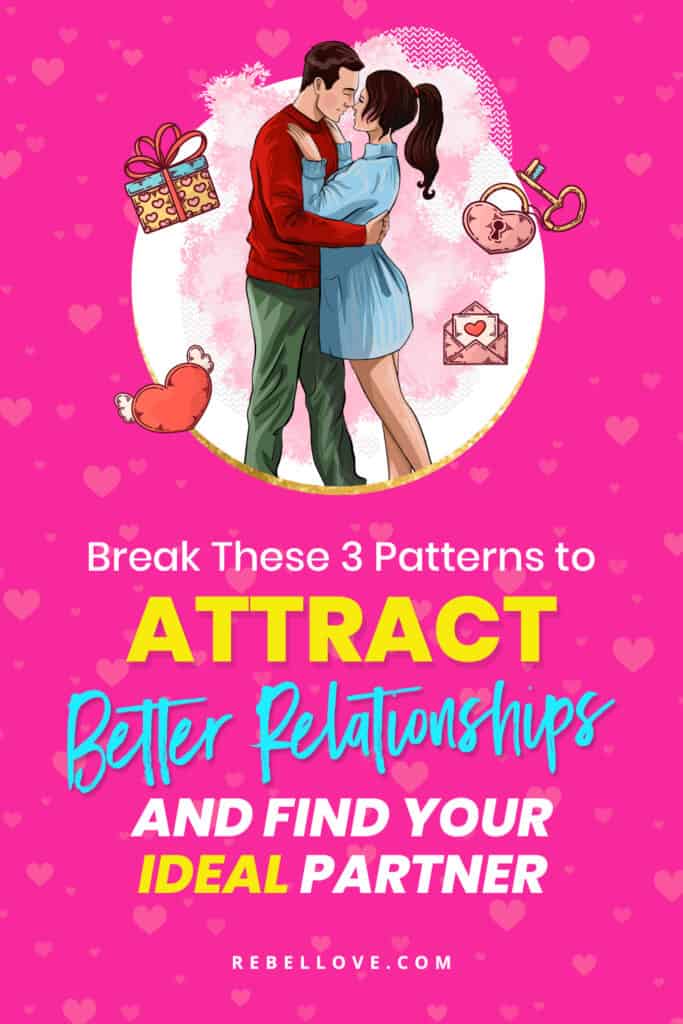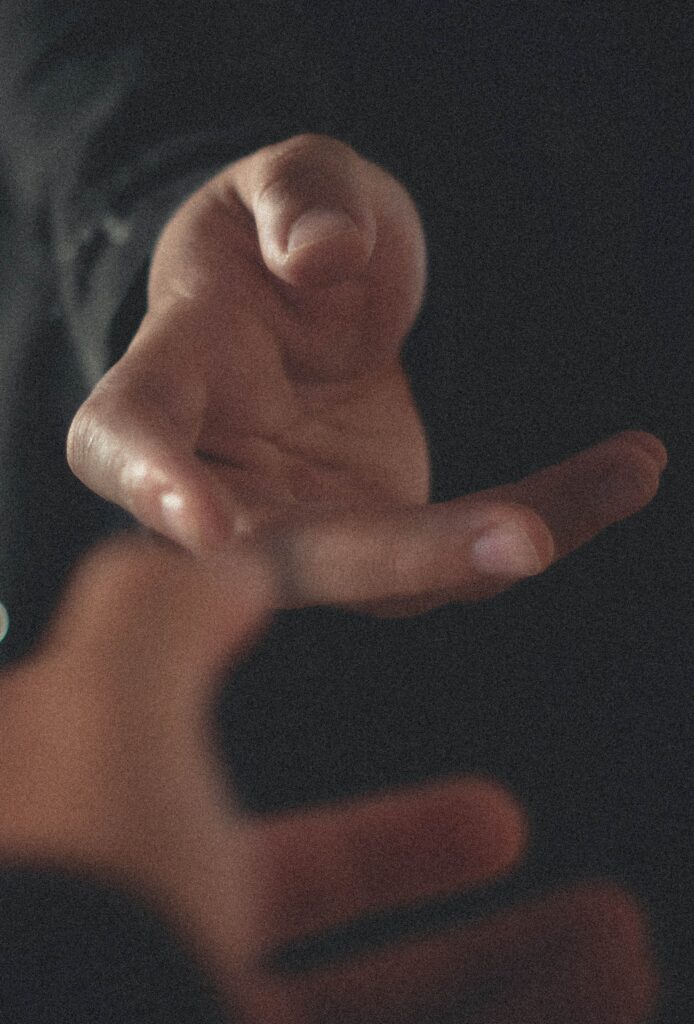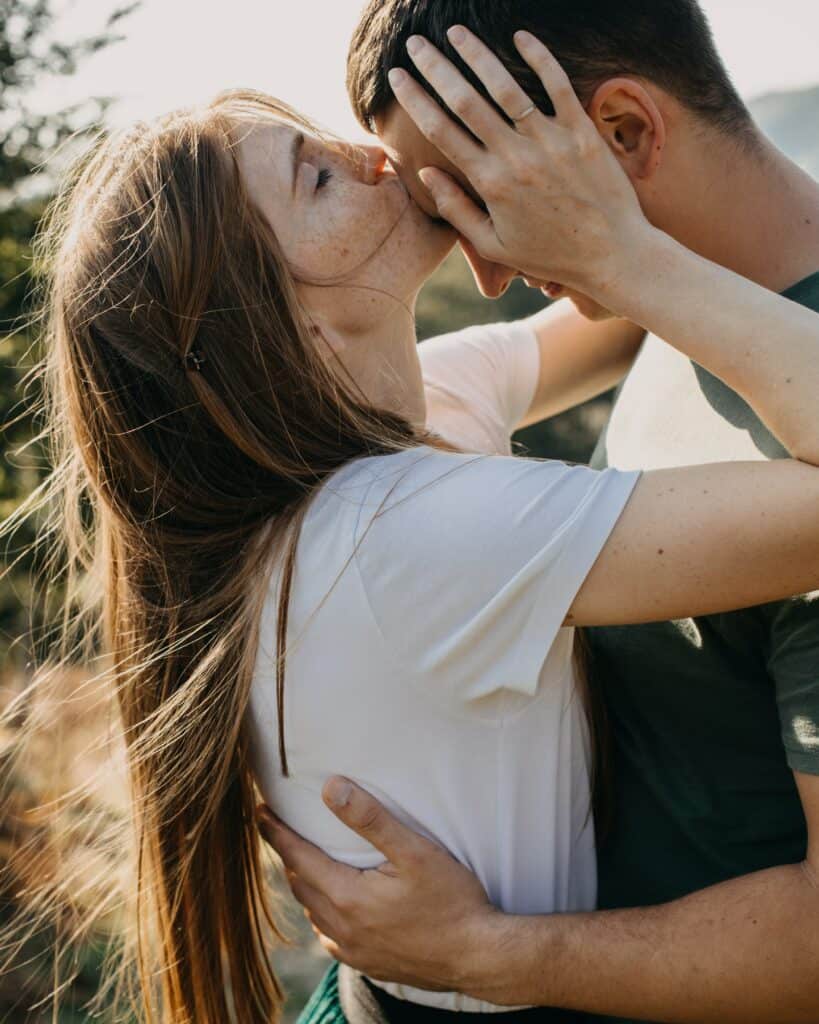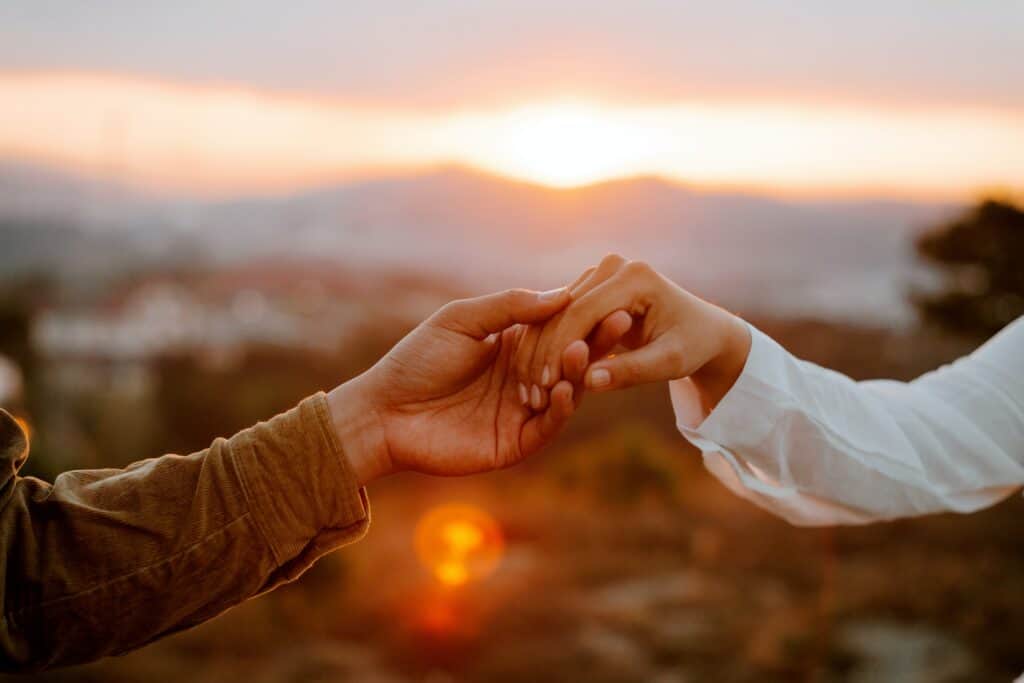This post may contain affiliate links and Rebel Love may be compensated for purchases visitors make through these links. We only promote products and services we really care about and that we think are useful. Read the full policy here.
Recently, I listened to two episodes of Glennon Doyle’s podcast, We Can Do Hard Things, featuring Dr. Becky Kennedy. I was introduced to a revelation about the influence of childhood attachments on our adult attractions, and I knew instantly I had to share it with you, Rebels.
As Dr. Kennedy delved into attachment styles and internal family systems, I found myself deeply impacted by the realization that our emotional and physical attractions in adulthood are intricately tied to our early childhood experiences. Questions swirled in my brain:

“Who did I marry?”
Was it that emotionally abusive uncle?
My delightfully warm and dark-humored grandpa?
That creepy cousin who was always around?
My unconditionally loving father?
Or someone else entirely?
I couldn’t help but question the dynamics of my own marriage, prompting a mix of anxiety and curiosity. I pondered the ways my childhood experiences were influencing my current relationship.
Is life just a theatrical production, each of us assuming a role based on our childhood adversities?
(Slight panic setting in…)
Reflecting on my past, I couldn’t help but acknowledge the trail of relationships that prolonged my trauma but also kept me imprisoned in a state of self-doubt.
Amidst the emotional whirlwind, however, relief finally washed over me. I recognized that I had broken free from significant patterns years ago, which slowly protected me from individuals whose presence would inevitably hinder my growth and perpetuate regression.
As I continued down memory lane, I witnessed the collective moments that had liberated me from those patterns, eventually opening doors to greater possibilities in the realm of love and relationships, ultimately leading me to James.
If I’m being totally honest, I wasn’t fully healed (is there such a thing?) when he and I got together. However, I’d made significant progress on my own which empowered me to evaluate our connection with a forward-looking lens that prioritized my desires and needs. In doing so, I refused to compromise on my soul’s cravings.
Attracting and maintaining healthy, fulfilling relationships is a desire shared by many. However, it’s not uncommon to find ourselves stuck in patterns that hinder our ability to form meaningful connections. Today, I am eager to share the three patterns that kept me stuck, how I went about breaking them, and the power this process had in changing the course of my (love) life.
1. Identify the Void You’re Trying to Fill
Oftentimes, we enter relationships with the hope of finding fulfillment or healing certain aspects of ourselves – be it consciously or not.
Personally, I yearned for an escape. Of course, my younger brain didn’t understand it in those terms. But I was driven by a deep understanding that the world held far more possibilities than the limited perspective of the adults around me allowed.
I was the adventurous kid who longed to take an audacious leap into the vast expanse of life. However, growing up in a family stifled by financial constraints and other more complex barriers, I found myself grappling with the invisible cage that hindered my aspirations and curtailed my potential.

In my quest for liberation, I convinced myself that the only path to escape lay in someone else’s arms.
What better thrill could there be than to find solace and freedom through the power of love?
I realize now that relying on someone else to complete us or fill an emotional void can lead to unhealthy dynamics and disappointment. In my case, that’s exactly what happened!
I was desperately longing for someone to be my savior, to the extent that I was willing to accept them without much consideration for their true nature or compatibility.
Can you guess what happened?
I got myself trapped in a whole different way. I was still in a cage, only now, I had an unpleasant roommate in there with me.
Luckily, I found my way out. Full transparency, I didn’t exit unscathed. Those who’ve gone toe to toe with an abuser are well aware of the immense challenges involved in breaking free, as well as the arduous journey of self-healing. This moment for me is what I consider my rock bottom, and let me tell you something:
Experiencing rock bottom, as I did, is not a prerequisite for initiating positive change. You do not need a sign or permission to begin loving yourself or pursuing the life of your dreams.
Which brings me to this:
Before jumping into a new relationship, explore what inner work needs to be done.
Take the time to reflect on your own emotional well-being and identify any unresolved issues or unhealed wounds.
Are you seeking an escape like I was? Maybe you feel lonely, have low self-esteem, or unresolved past trauma. Regardless of what the wound is, addressing it through self-reflection, therapy, and/or personal growth will help you develop a stronger sense of self and attract partners who complement your growth rather than trying to “fix” you.
I began that journey a mere few months prior to meeting James.
I checked into an outpatient program for an eating disorder, started a free “positive mindset” program, and committed to being militantly on my own side.
The path I chose was far from easy, fraught with emotional challenges, relapses, and setbacks. But I stuck to it, always reminding myself that the world is bigger than me and my bad feelings. I quickly understood that no negative thought or experience existed without a countering positive one – so I trained myself to lean into the latter.
So can you.
2. Rethink Your “Type”
When it comes to relationships, many people tend to gravitate towards a specific type of person.
Whether it’s a preference for certain physical attributes, personality traits, or even shared interests, fixating on a narrow “type” can limit our potential for genuine connections.
I get that this sounds odd, maybe counterintuitive, but remember:
Our emotional and physical attractions in adulthood are intricately tied to our early childhood experiences.
When I first brought James home to meet my family and friends, most of them had the same reaction:

“Really?”
“Are you sure?”
“He’s so different from anyone else you’ve dated.”
James stands tall, has a slim physique, and exudes confidence. His creative nature is complemented by his charisma, yet he remains remarkably humble and self-controlled. He communicates honestly, shows affection and is unafraid to share his feelings towards me.
In contrast, my personal track record reflects the following characteristics: shorter to average height, (very) muscular build, displays of aggression and recklessness, non-committal, a tendency towards heavy substance use, and an unfortunate streak of egotism.
Looking back, I understand that my attraction to those types of partners stemmed from a deep-seated desire for validation, coupled with a longing to be the “exception” to their rule – in essence, believing I could tame the untamable. All of which I can trace back to major childhood events, specific family members, and interactions.
While it’s true that some individuals were fortunate to have had nurturing childhoods and strong bonds with emotionally healthy adults, it’s important to recognize that not everyone shares this experience.
For those of us who may have encountered, say, narcissistic parents or abusive family members, it’s crucial to recognize that our attraction towards someone can serve as a potential warning sign.
Hence my track record…
When I met James, I wasn’t initially drawn to him, but there was something about his presence that brought an unfamiliar sense of calm. It intrigued me, so I decided to keep seeing him. Considering my recovery from an eating disorder after a chaotic relationship, experiencing calmness was oh-so soothing.
Getting to know him was interesting because I kept waiting for the other shoe to drop, expecting the Jekyll and Hyde show.
It never happened.
To be honest, there were moments when I actually craved that chaos. I realize now that these cravings represented a desperate longing for familiarity. Unfortunately, when most of your family and romantic life have been tumultuous, calmness can be unsettling, maybe even dull. I’ll admit, I was scared at first—could I handle such a stable relationship?

But as it turns out, not only could I handle it, but I thrived in it.
The absence of emotional distress allowed me to redirect my energy towards other passions: sexuality, travel, art, and personal growth.
I discovered the essence of being myself in a relationship, free from the constant need to prove my worth or resolve conflicts. By taking my time and investing my energy into the right person, the smoke cleared, and I embraced a profound sense of peace from which I could continue to grow and heal.
So, when pursuing a romantic relationship, always consider that going for the same kind of person may be part of the problem. Take time to reflect on unresolved issues from the past. By understanding and addressing these dynamics, you can begin to break free from the cycle and open yourself up to a wider range of potential, more suitable, partners.
3. Proactively Choose Your Partner
Last night, James and I watched the new season of Black Mirror. There’s one episode in particular, entitled Joan is Awful (don’t worry, no spoilers follow). There’s a moment where Joan (played by Annie Murphy) is speaking to her therapist. She shares that she doesn’t feel like she actively chose her life; specifically, she states, “I feel like I’m not the main character in my own life story.”
I bet that resonated with a lot of people
Prior to meeting James, I had a tendency to let my romantic partners choose me. In other words, whenever a man showed interest, I would often go along without much introspection or consideration for my own feelings or desires, and my life would swiftly revolve around them.
A valuable lesson I’ve learned is that establishing a healthy relationship requires active participation from both parties.
Instead of passively allowing people to choose you, understand the importance of actively engaging in the selection process. Doing so not only leads to more fulfilling relationships but also serves as an exercise in cultivating self-esteem.
While initial attraction and chemistry are important, it’s equally vital to evaluate compatibility, shared values, and long-term goals. Which is precisely what set James apart from everyone else.
Instead of settling for anyone who shows interest, take the time to get to know potential partners on a deeper level. Engage in meaningful conversations, observe their behavior and actions, and consider how well they align with your values and goals.

By actively choosing your partner, you increase the likelihood of finding someone who genuinely supports your growth and contributes to a fulfilling relationship.
I remember the day I actively chose James.
We were sitting in the backseat of my car, under the stars in a parking lot and I confided in him; I shared that I was recovering from bulimia nervosa. We had been seeing each other for months. I’d braced myself for any kind of reaction, even if at that point I had enough trust in who he was to be receptive, gentle, and compassionate.
I was right.
He extended his sympathy, unwavering support, and, for the very first time, his love. While I didn’t reciprocate those words on that particular night (something he teases me about to this day), something within me unfurled, releasing a pent-up pressure I hadn’t realized I’d been carrying. There was a deep knowing, coupled with a resolute choice that whispered, “This journey together could be extraordinary. Do you want it?” And without hesitation, I thought to myself, “Absolutely.”
Embrace This New Beginning
Trust me when I say that once we cultivate self-acceptance and make choices that align with our desires and values – particularly when it comes to selecting a lifelong partner – we liberate ourselves from our past and waste less time on unfulfilling connections.
By embracing this process, we affirm and reaffirm our inherent self-worth!
Genuine and profound connections are formed when we have the confidence to trust our own instincts and acknowledge our true wants and desires. By refusing to settle for anything less than the magic that those desires bring, we forge the strongest relationships.
The journey always begins within ourselves – grant yourself permission and recognize the power that is already in your own hands. From this place, you will undoubtedly attract better relationships and find your ideal partner.
Until next time,
Be well, friends!
Quean Mo xx